A Day with the Huawei Mate 30 Pro: Kirin 990 and 7680 FPS Slow Motion Tests
by Dr. Ian Cutress on September 23, 2019 4:00 AM EST- Posted in
- Smartphones
- Huawei
- Kirin 990
- Mate 30 Pro
- 7680fps
_678x452.jpg)
Last week Huawei launched its latest flagship smartphone, the Mate 30 Pro, featuring its latest Kirin 990 chipset. At the heart of the new hardware is a waterfall wrap-around screen, as well as new camera tools to help it record slow motion video up to 7680 frames per second, above and beyond what is currently available. The new smartphones will not come with the Google Play Store and applications, due to the US-China trade war and Huawei being placed on the US Entity List, however Huawei has promised to look into unlocking the boot loader and injecting $1B into its own App Store to drive new applications. 5G versions of the Mate 30 and Mate 30 Pro are due out later this year, but we managed to get access to a device for a day or so for some hands-on experience.
*For disclosure, in this mini-test we have a pre-production Chinese sample. The software is not yet in its current and final shipping state, and may differ compared to the launch version.
Huawei’s Mate 30 Pro: The Design
As with the most recent Huawei flagship devices over the past couple of years, the Mate 30 Pro is a hard device to ignore. With the trend of full-screen displays going beyond the edge of the device itself, Huawei has pushed its high-end device with a true wrap-around edge experience. This new ‘waterfall’ display, or ‘Horizon Display’, features an 88-degree curve at the edge, making its way half-way down the edge of the display.
This does one of two things. Firstly, it affects how we change the volume, as there is no volume button control. In order to adjust the volume, the user double taps on the edge of the display, and the volume pop-up allows the user to swipe up and down, using a thumb on the edge of the display, to adjust the volume. This can be done on the left or the right of the display, which personally is a good idea. Users can adjust it to only work on one side, depending if they use it left or right handed. (The power button is still on the right side).
The other query with this display might be how it feels to hold. I’ll be honest, it does feel a little more slippery than the standard sides of a phone, but not to the point where it drastically changes the way a phone is normally held.
The 6.53-inch Flex OLED display actually comes in at an odd resolution, 2400x1176, giving an aspect ratio of 18.4:9, because Huawei is counting that additional edge display. I’ve noticed that most apps, even Huawei’s own apps, seem to ignore the edges pretty much, and just focuses on a 2400x1080 style implementation for a 20:9 experience. As we can see from this image, the 'black' areas in the corners are where this application isn't even bothering to detect and cover up.
I will say though that I experienced very few ghost taps with the display. It barely recognized any feint taps on the edges, which suggests that Huawei’s false detection algorithms are working really well.
At the top of the display is the notch, which houses several cameras: a gesture sensor, two 3D depth cameras, an ambient light/proximity sensor, and a 32MP f/2.0 front-facing selfie camera. This comes with a portrait mode, supporting bokeh effects, but Huawei has also enabled gesture control, such that users can take screenshots or scroll webpages without actually touching the phone. Personally I find gesture controls a little gimmicky still, so I have not used them.
The rear of the device holds the main cameras, which for this smartphone Huawei is calling its ‘SuperCine’ orientation, to add Cinematography-class quality to a smartphone. The four cameras are aligned in a 2x2 grid and surrounded by a ring, designed to look like a more expensive camera arrangement when the smartphone is held horizontally.
For the Mate 30 Pro, Huawei uses the top left for 3D depth sensing, the top right is an ultra-wide 40MP f/1.8 camera, the bottom left is a 40MP f/1.6 camera with OIS, and the bottom left is an 8MP f/2.4 telephoto camera and lens, also with OIS. The whole camera system supports AI stabilization techniques, as well as ISO 409600, and video bokeh. The telephoto camera enables a 3x optical zoom, and a macro mode allows for 2.5cm close up shots.
The key thing about this arrangement is the dual 40MP cameras. The 40MP ultra-wide Cine camera is an RGGB sensor, and is paired with the 40MP SuperSensing (4-in-1 pixel binning) RYYB sensor. The Cine camera supports 4K60 video, with an ISO of 51200, 4K HDR+, real-time video bokeh, and a new super-slow motion mode up to 7680 fps. The 7680 fps I’ve tested in a couple of demo videos later on.
The Mate 30 Pro comes in an offering of six colors, with four standard colors (Space Silver, Emerald Green, Cosmic Purple, and Black) and two classified as ‘Vegan Leather’ (Forest Green and Orange), which are essentially some up-market PU leather made from plastic.
The Emerald Green one is special in that it features a gloss-to-matte gradient finish. The rear of the device at the bottom feels like a Huawei laptop, with its metallic alloy soft touch, and then as you move up the device, it turns into a glass feeling smartphone. The idea here according to Huawei is to give it a unique texture that also doesn’t put fingerprints where people usually hold phones. It’s a bit hard to demonstrate without actually feeling it for yourself though. We can kind of see the textured surface with a high powered light:
The Mate 30 Pro doesn’t have a 3.5mm jack (the Mate 30 does), but does have a USB Type-C connector and an IR blaster. Compared to the P30 Pro I have been using as my daily driver for the last few months, the Mate 30 Pro looks slightly wider due to the display, and the grip is near equal. I typically use the P30 Pro with a case, but the Mate 30 Pro sample we were given for review did not have one.
Read the following pages where we cover some Kirin 990 performance, camera and video, as well as all the technical details.


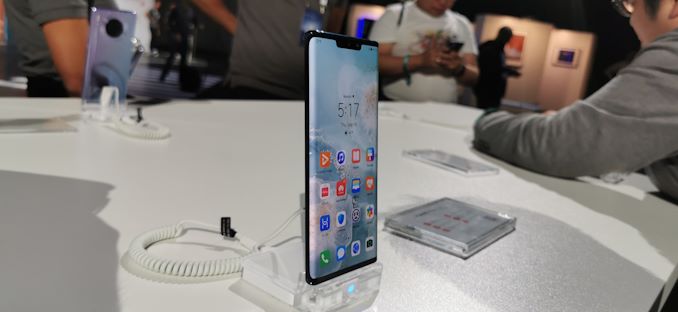
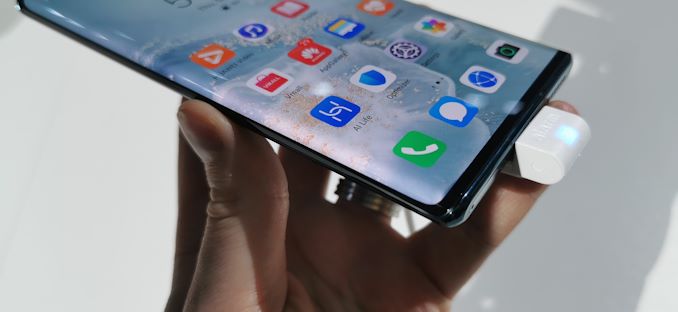

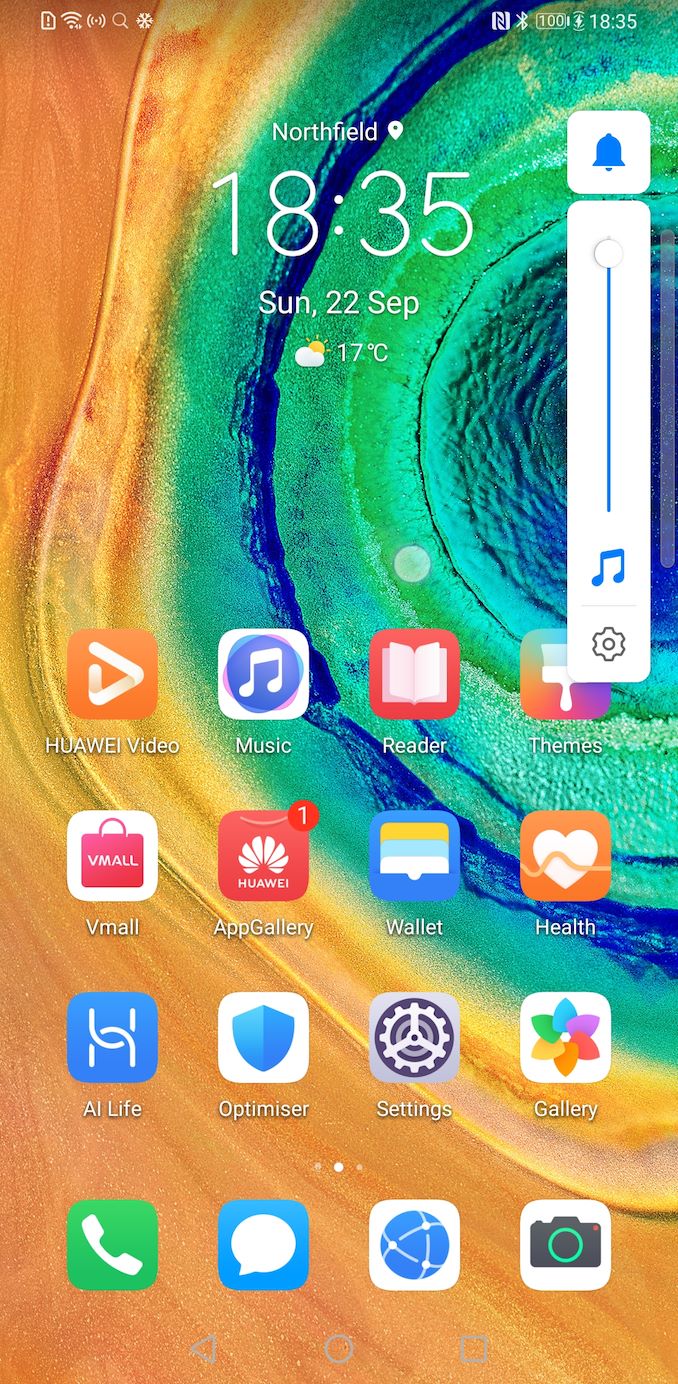
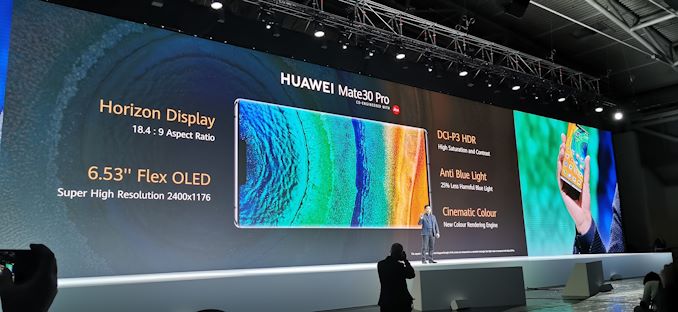
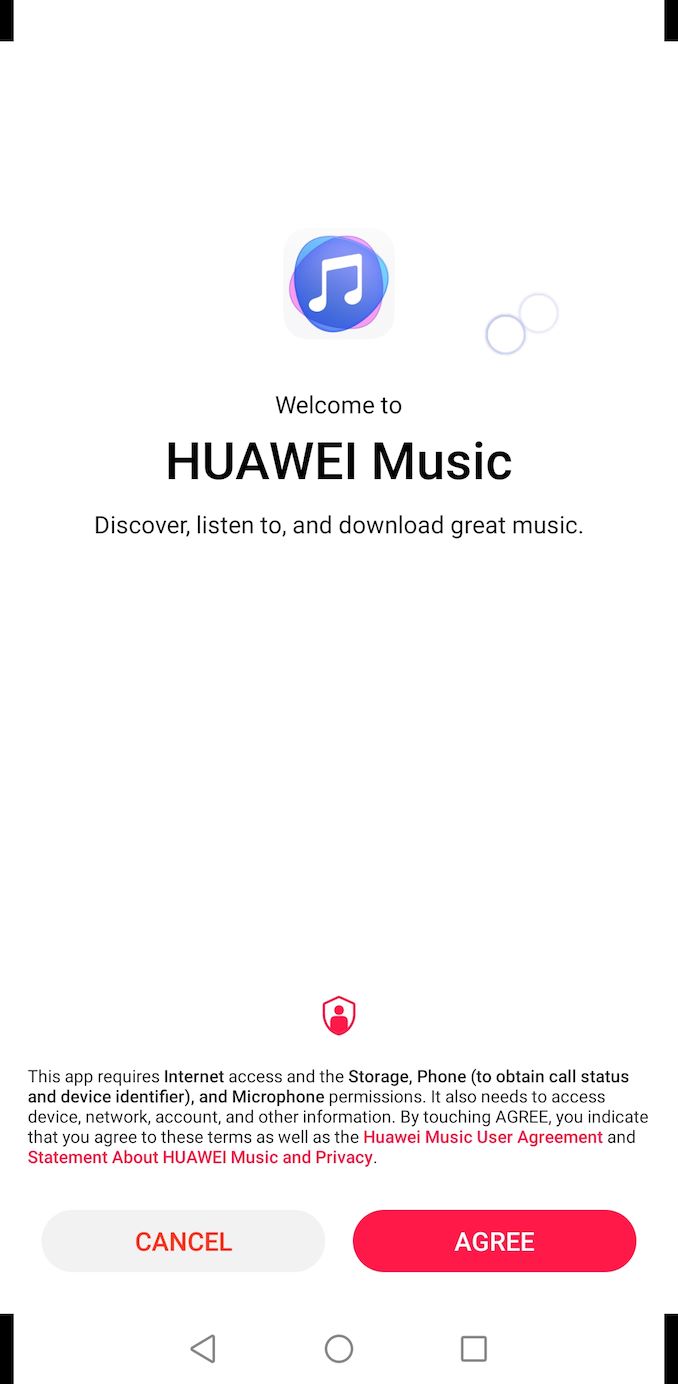
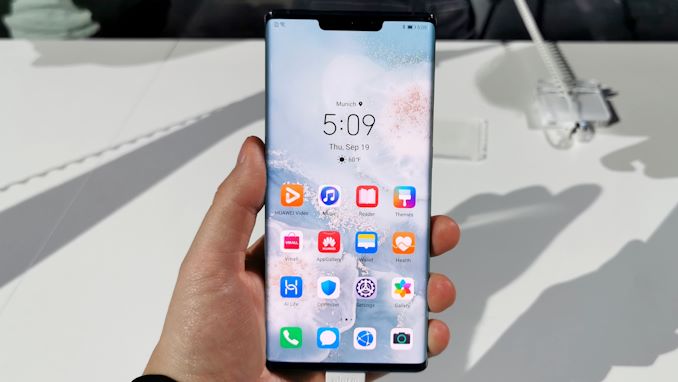
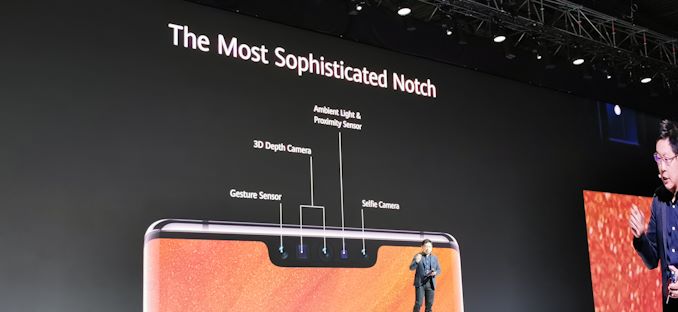
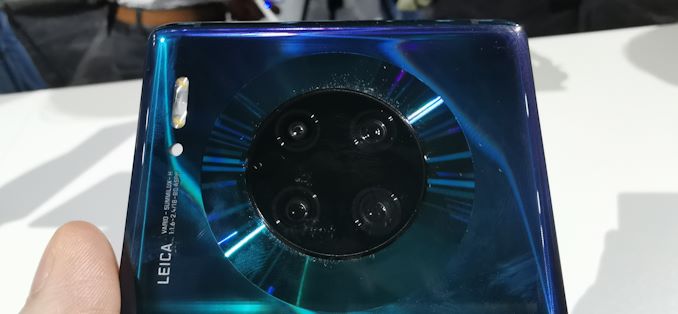

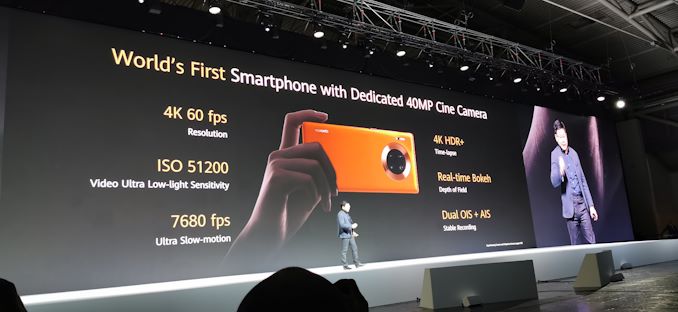
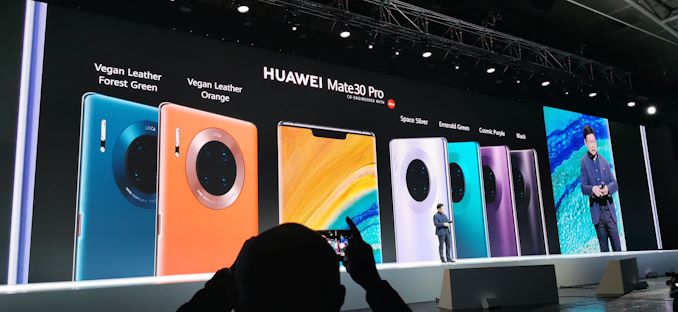









47 Comments
View All Comments
Ian Cutress - Tuesday, September 24, 2019 - link
Did you fail to read the very last line of this hands on?s.yu - Tuesday, September 24, 2019 - link
If you're suggesting that the full review will be Andrei's, that's not my point, my point is that whoever, at Anandtech, tested the device in this limited scope, should have done better. The title is called "Kirin 990 and 7680 FPS Slow Motion Tests" after all, there's no point in releasing these non-indicative results if Andrei's going to do it all over again, properly.philehidiot - Thursday, September 26, 2019 - link
You're picking and choosing what to criticise, aren't you? The title starts with "A day with".A DAY.
If you're going to quickly go over most aspects of a device in a day, you have to use what's around. If you can fully set up tests and review a slow motion camera in a day, along with all the other stuff here, set up your own site and compete. You're being unrealistic and hypercritical whilst also being wilfully dishonest to achieve your ends.
When you're done being all upset that you're getting this kind of response from people, do consider if this keeps happening the problem isn't everyone else.
s.yu - Thursday, September 26, 2019 - link
lol, Here's a fool looking for humiliation.You're talking about taking "a day" literally? As in he's had this device for exactly 24hrs? Then obviously you need to take the rest of the title literally don't you, "Kirin 990 and 7680 FPS Slow Motion Tests"
And what do we have regarding the conclusion of an article under this title? "The big question on everyone’s lips is whether Huawei can survive without the Play Store, and then in turn, without Google’s main apps like Gmail, YouTube, or Maps." In fact half of the whole conclusion is regarding "whether Huawei can survive without the Play Store" blah blah blah. What's that got to do with "Kirin 990 and 7680 FPS Slow Motion Tests"? Nothing! It means that the title cannot be taken literally! Your sophistry hinges on the assumption that the first half of the title means what it says, yet the conclusion already proves the second part false, it means you need a half-true-half-false title in which the true part is what you want it to be, I think that's called "being unrealistic and hypercritical whilst also being wilfully dishonest to achieve your ends", lol.
s.yu - Thursday, September 26, 2019 - link
Also, my fundamental point stands that he's condoning Huawei's lies by calling it clever, which is an extension from his last article in which he took on the tone of Huawei's mouthpiece, and it also stands, no matter how much time he actually had or could have had with the device, that the results are non-indicative aside from proving Huawei's 1-to-4 frame interpolation, in addition to the fact that Andrei's doing the full review sometime later, that, according to you, must include a proper, indicative test of the slo-mo anyway since he's not on a deadline or on a very loose one per usual Anandtech, it's a futile exercise, and so, what should I call this article then...yes, Huawei clickbait.philehidiot - Saturday, September 28, 2019 - link
"Fool"? I call myself an idiot in my name. Don't you DARE try to imply I'm anything less than an idiot. Prat. Also, if you're going to insult someone's intelligence, please consider capitalisation, etc. Glass house, stones, etc. Get your own act together before insulting.So half the conclusion is on the most important question surrounding this phone and you're criticising this? And you're insisting on bitching about the title not being completely literal as your main point? So, using a load of electronic trickery to produce massive frame rates is not clever? Okay, YOU do it. If it's not clever, it's clearly within the reach of the average which should be well within your grasp as you're calling other people fools. So you must think you're clever.
I'm sensing some Dunning-Kruger going on here.
So, if the whole thing is a futile exercise, please do tell.... why are you bothering reading it all and excreting your opinion all over the rest of us? Do tell. I'm sure your time is far better spent doing all these amazing things you should be doing rather than attempting to shit all over everyone else's work.
Huawei clickbait? I'd say Anandtech would be more predisposed towards Qualcomm clickbait given they take money and so on from them.
And yes, the results prove that the interpolation works.... as well as a couple of ways it's difficult to use and some settings it works well in and some it doesn't. Y'know... the overview implied by the bloody title. Why do reviews sites look at motherboards and bench them when the results are usually within a few percent of a competing board? Or why do they test two SSDs of two differing brands which use identical controllers and NAND? Because companies lie, cheat and steal and checking the stuff does what it claims to do is the first step towards informing the consumer.
Now, please do consider your arrogance and attitude is not helping your case. You could make a good one people will read. But... you chose to go down the "insult everyone else until they agree with me" route. No one will EVER agree with you or take you seriously if you feel you have to insult them to get your point across.
Twat. ;)
s.yu - Sunday, September 29, 2019 - link
I commend you for your self-awareness of your idiocy.There's not much worth arguing about considering hardly anything stands in your idiotic rant.
"on the most important question surrounding this phone"
Says you, many on the site agree that it's political BS. Go back to the Richard interview and count how many people agree with me.
"And you're insisting on bitching about the title not being completely literal as your main point? "
Rather that's your main point, how "A DAY", in all caps, excuses the sloppy job. I won't waste my time reiliterating my main point what I've stressed in abundance.
"a load of electronic trickery to produce massive frame rates"
No, it's deceitful. 1920fps readout interpolated x4 != 7680fps readout, far from equal. I don't even dare do 4x interpolations on Twixtor because of how poorly the results turn out, and this is at an even lower processing precision on a low power platform real-time. I don't do it because I have a bottom line, not Huawei. As far as I‘m aware all slo-mo have been advertised as their actual readout speed until Huawei came along and turned a native 480fps device into "960fps" through a firmware update just because Sony could do real 960fps. You're free to prove me wrong with an earlier example though.
"I'm sensing some Dunning-Kruger going on here."
Sense harder, and you'll sense where it actually happens.
"if the whole thing is a futile exercise"
This whole article is a futile exercise, given that there will be a more comprehensive one by Andrei which, again, according to you does not make the sloppy mistakes in this one because of a loose timeline. However there's no way for me to know until I've read it through, is there. You really are such an idiot that you ask 7N oxygen-free idiotic questions.
"Anandtech would be more predisposed towards Qualcomm clickbait "
Sorry but the Qualcomm articles adhere to Anandtech's quality standard and are strongly critical in many instances, OTOH Ian in this article (and the Richard one) takes on an inappropriately welcoming tone towards blatant dishonesty and corporate jargon. And FYI he got free trips to China from Huawei, possibly other freebies.
"as well as a couple of ways it's difficult to use and some settings it works well in and some it doesn't"
Not nearly as clear as it should be, Youtubers could do better than this.
"Why do reviews sites look at motherboards and bench them when the results are usually within a few percent of a competing board..."
You're inadvertantly agreeing with me, idiot.
"Now, please do consider your arrogance and attitude is not helping your case."
Though you did a good job about your idiocy back there, there's still call for some self-refection.
"No one will EVER agree with you or take you seriously if you feel you have to insult them to get your point across."
Look again where the insult started, and with some Dunning-Kruger, ironically.
"Twat. ;)"
I'll take that as your motto.
pinchies - Friday, September 27, 2019 - link
Dear Ian,Those sample videos clearly show that they are using optical flow image processing to interpolate frames. Even though this is a quick look article, I think that extended slow-mo section should be edited to add a clarification that this is not native 7680fps, which is simply clickbait being peddled by Huawei. There are apps on the mobile stores that can do this kind of interpolation, we only care about the hardware refresh rate.
s.yu - Friday, September 27, 2019 - link
Spot on.Haldi - Wednesday, October 9, 2019 - link
QFT!